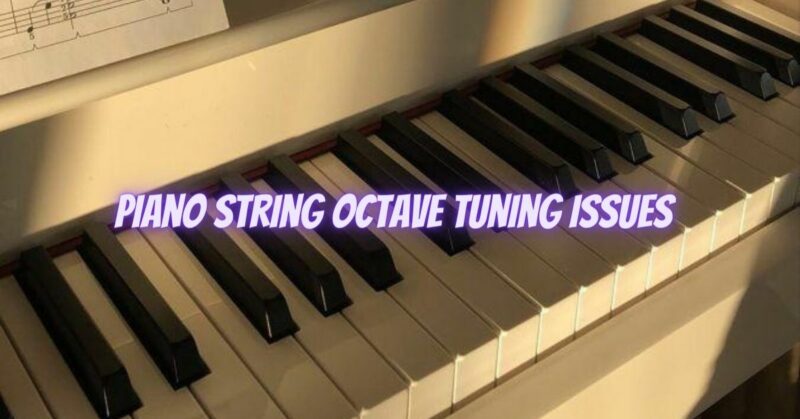Tuning octaves in piano strings is a critical aspect of piano maintenance, as it ensures that the instrument produces harmonious and balanced sounds. Octaves consist of two notes that are eight diatonic scale degrees apart, and they need to be precisely in tune with each other for the piano to sound its best. However, several factors can lead to octave tuning issues in pianos. In this article, we will explore some common causes of piano string octave tuning problems and the appropriate solutions.
- String Age and Wear: Over time, piano strings can wear out, losing their elasticity and ability to hold tension properly. As strings age, they become more prone to breaking and may not hold tune well, leading to octave tuning discrepancies. Replacing old or worn-out strings is often the solution to restore proper tuning.
- Temperature and Humidity Changes: Pianos are sensitive to fluctuations in temperature and humidity, causing the soundboard and strings to expand and contract. These changes can lead to octave strings going out of tune. To minimize this issue, keep the piano in a stable environment with controlled temperature and humidity levels.
- Improper Tuning Technique: Tuning octaves requires skill and precision. If the piano technician is inexperienced or employs improper tuning techniques, it can result in octave tuning problems. Regularly hiring a qualified and experienced piano tuner is crucial to maintaining proper tuning.
- Inharmonicity: Piano strings are inherently inharmonic, meaning that the higher partials of a string’s vibration are not exact multiples of the fundamental pitch. This phenomenon becomes more noticeable in the higher octaves and can cause tuning difficulties. Skilled tuners may use stretch tuning or other methods to compensate for inharmonicity.
- String Slipping: If piano strings slip from their proper position on the bridge pins or the hitch pins, it can result in inaccurate tuning, especially in the octaves. Properly securing the strings and making sure they are seated correctly can resolve this issue.
- Bridge and Soundboard Issues: Issues with the piano’s bridge or soundboard can affect the transfer of vibrations from the strings, leading to uneven tension and tuning discrepancies in the octaves. Regular maintenance and inspection of these components can help prevent tuning problems.
- String Replacement and Mismatch: Replacing individual strings with non-matching or incorrect strings can lead to octave tuning issues. Always ensure that replacement strings match the original strings in diameter, length, and tension.
- Piano Regulation: Regulation refers to the adjustment of the piano’s mechanical components to optimize touch and responsiveness. Proper regulation helps maintain accurate octave tuning. If the piano action is not regulated correctly, it can cause irregularities in the hammer-striking point, affecting tuning consistency.
In conclusion, octave tuning issues in piano strings can arise due to various factors, such as string age, environmental changes, improper tuning techniques, inharmonicity, and mechanical problems. To address these issues, regular piano maintenance, professional tuning, and proper repair are essential. By taking good care of your piano and seeking the help of qualified technicians, you can ensure that your instrument produces beautiful and harmonious sounds for many years to come.


